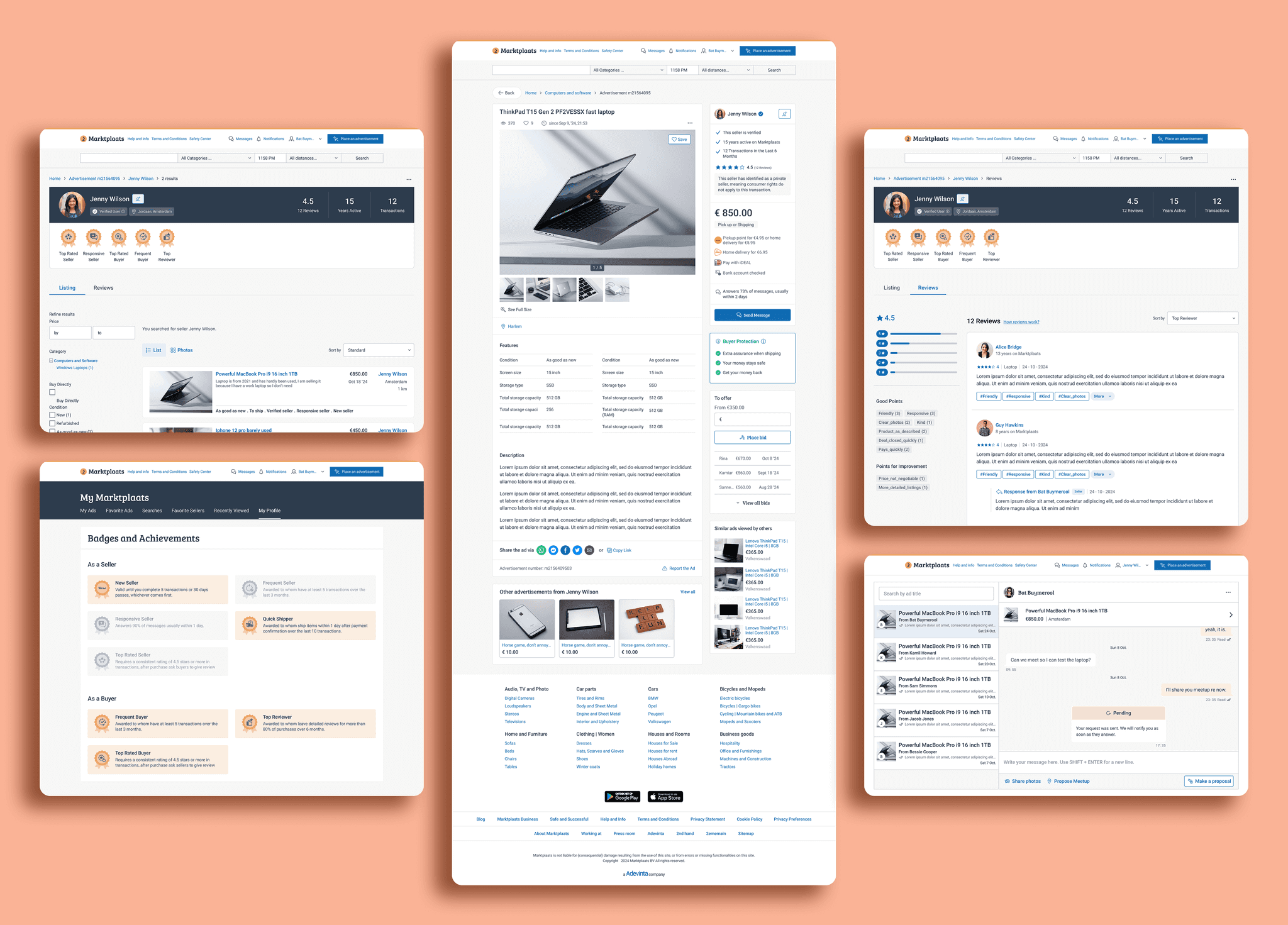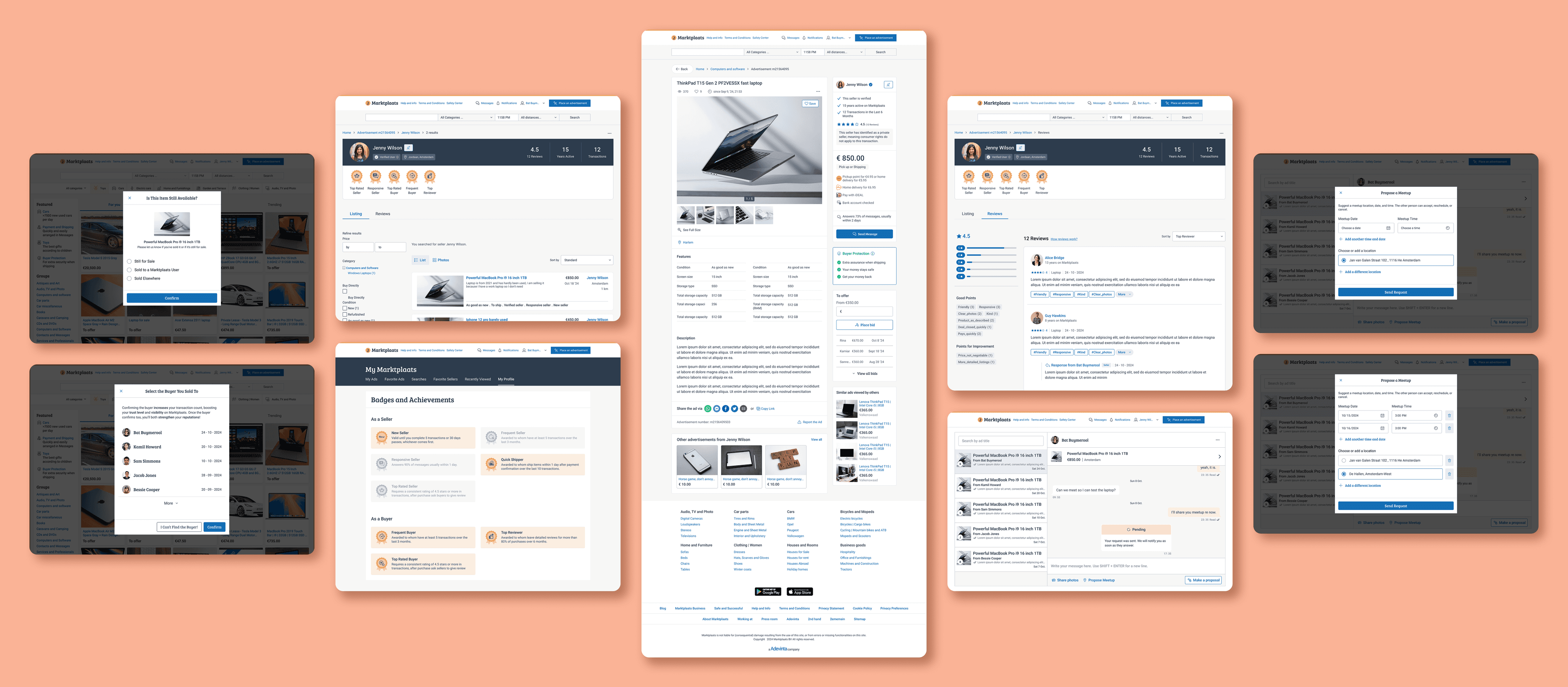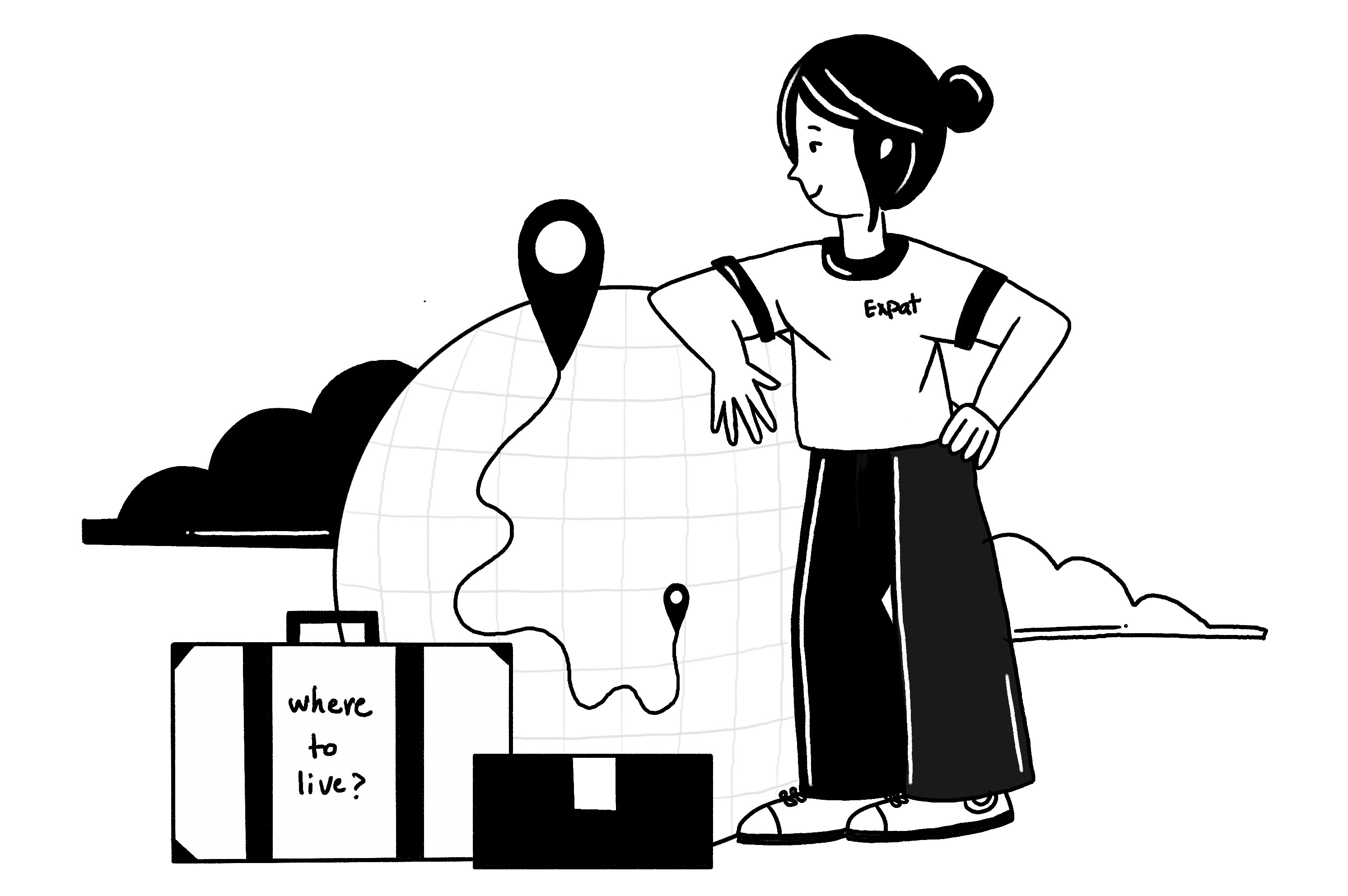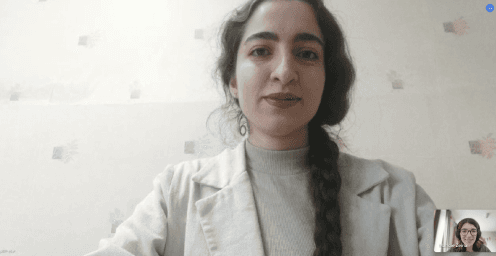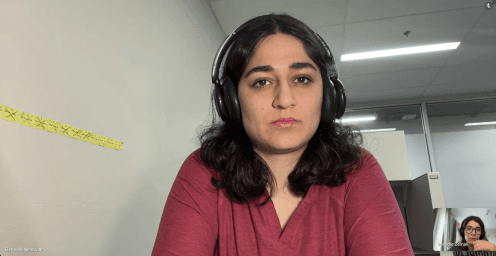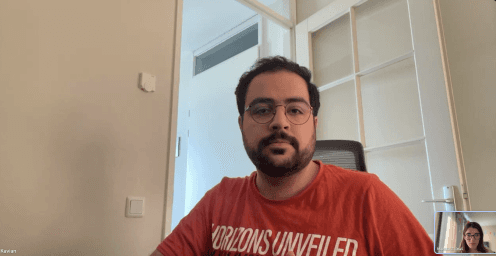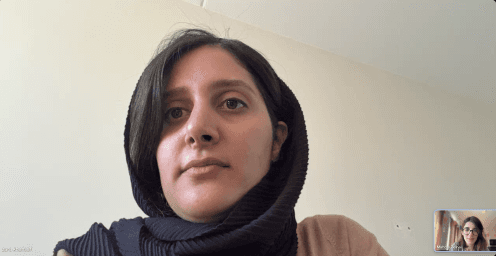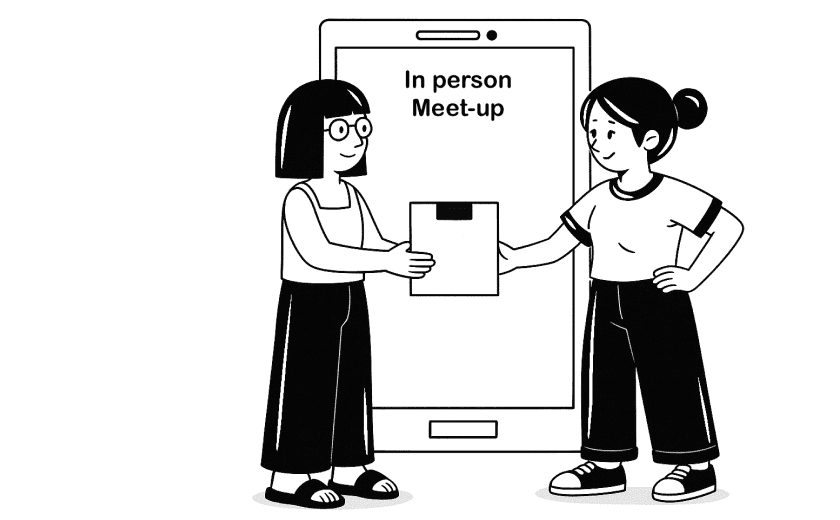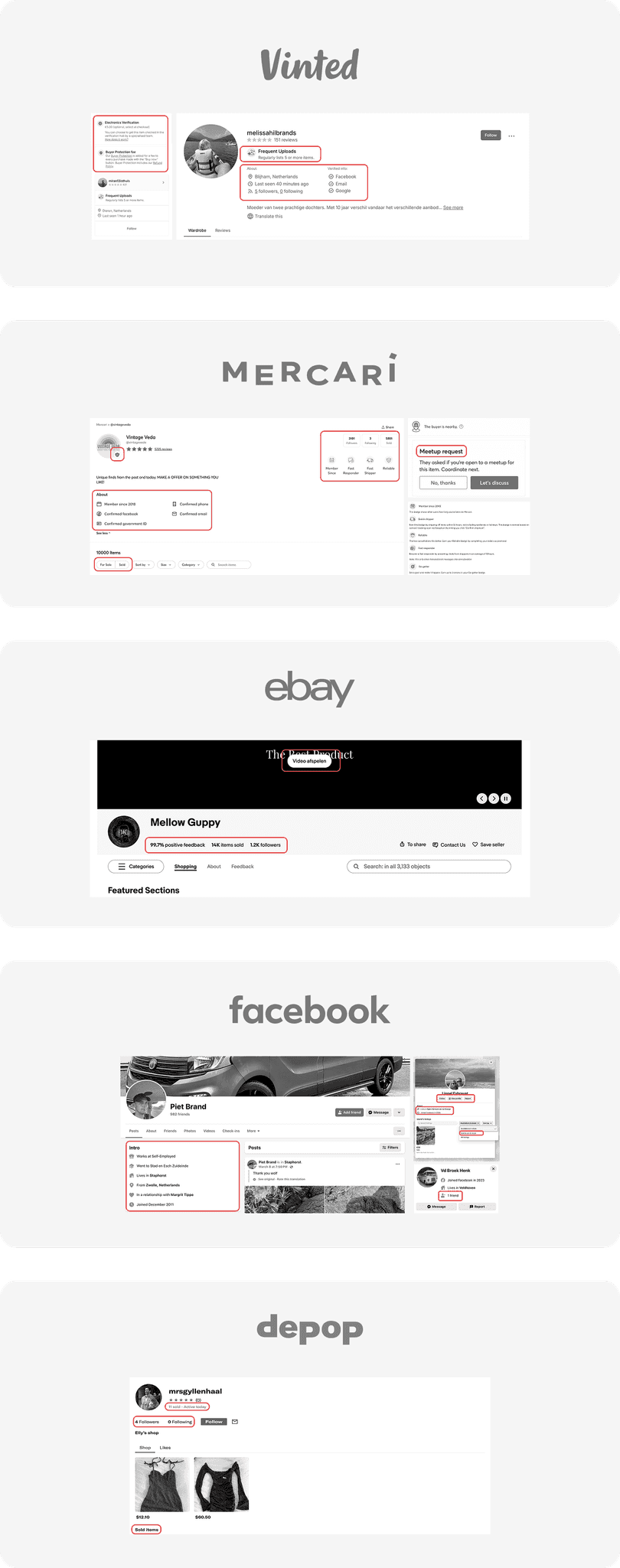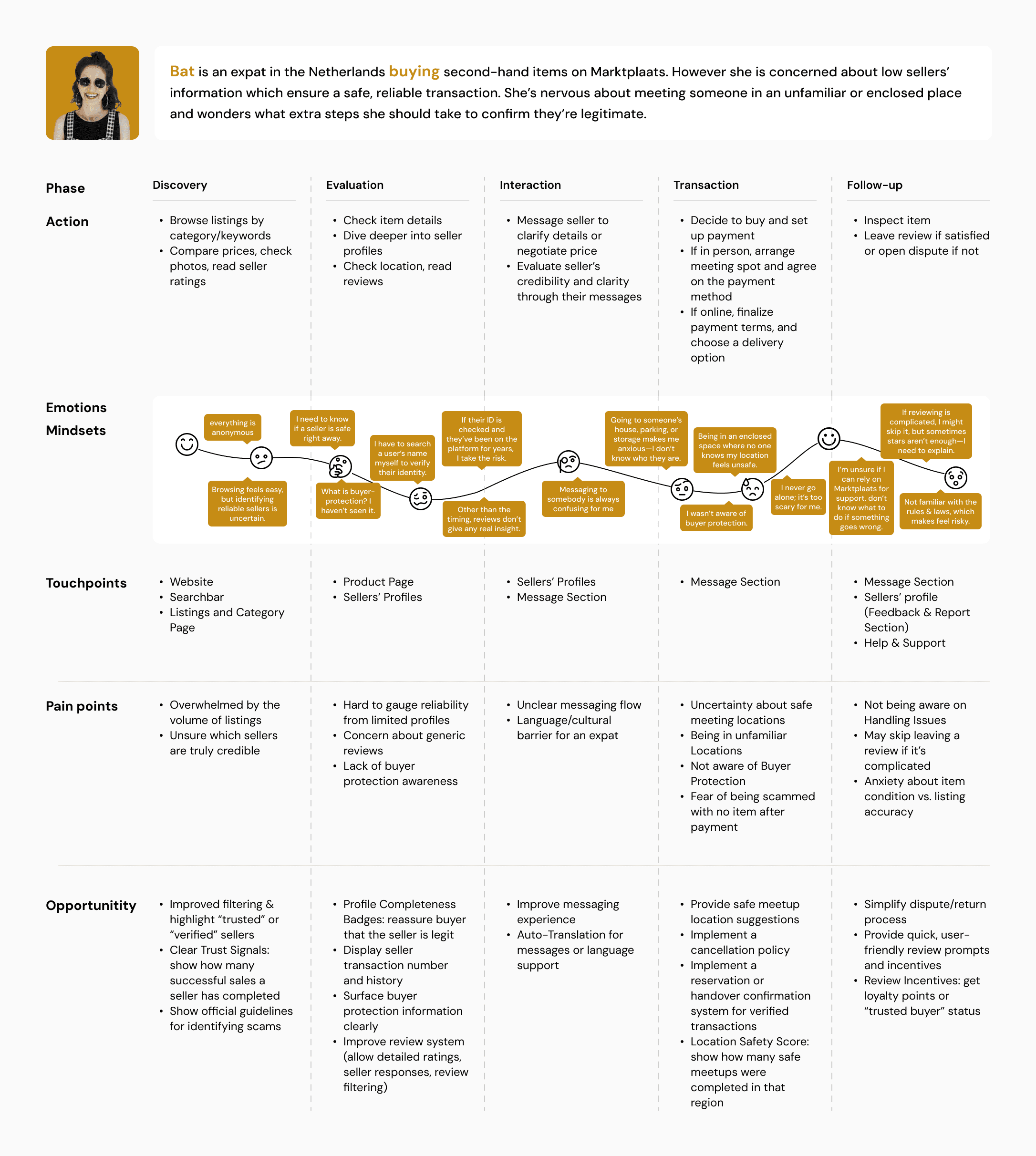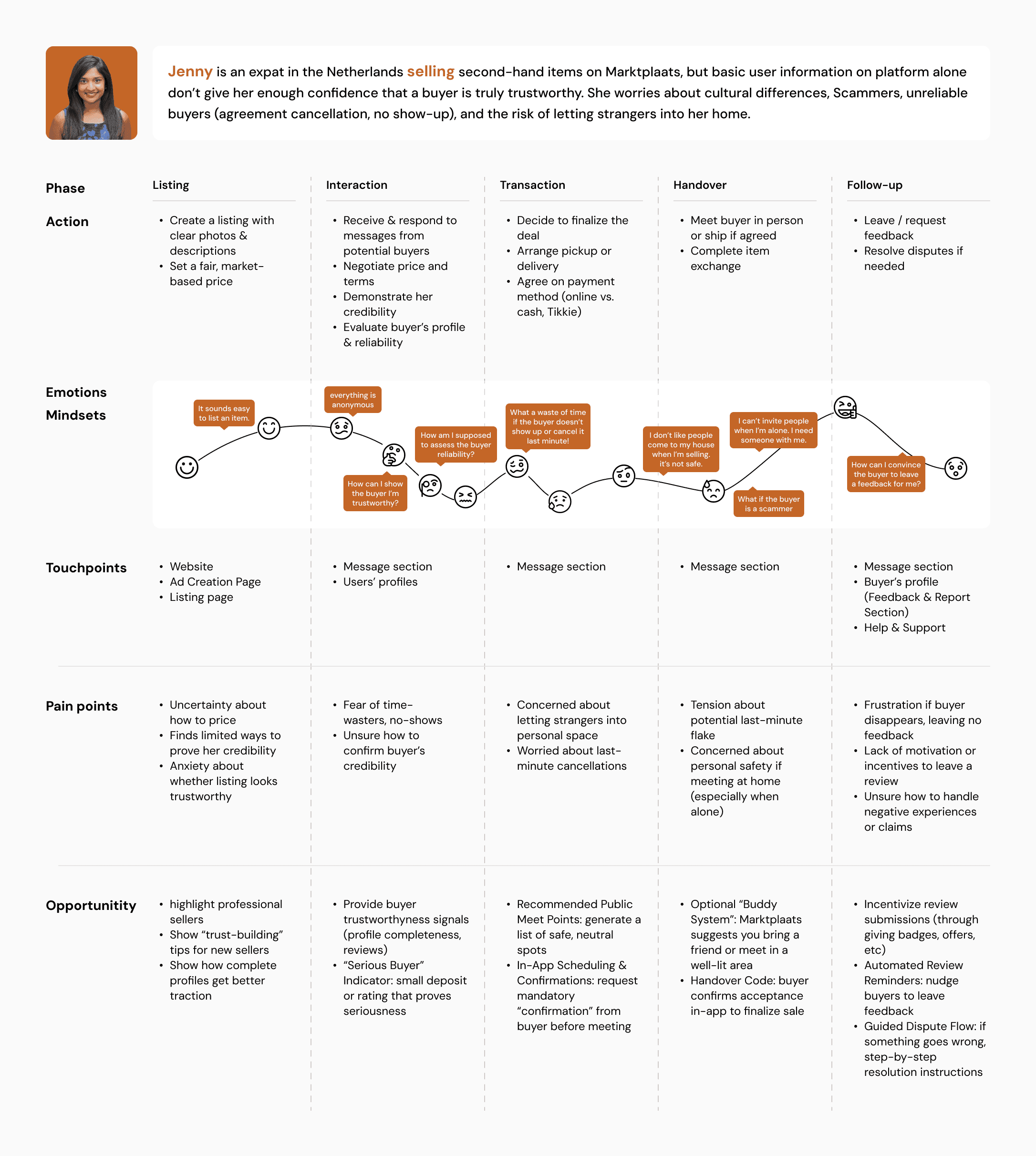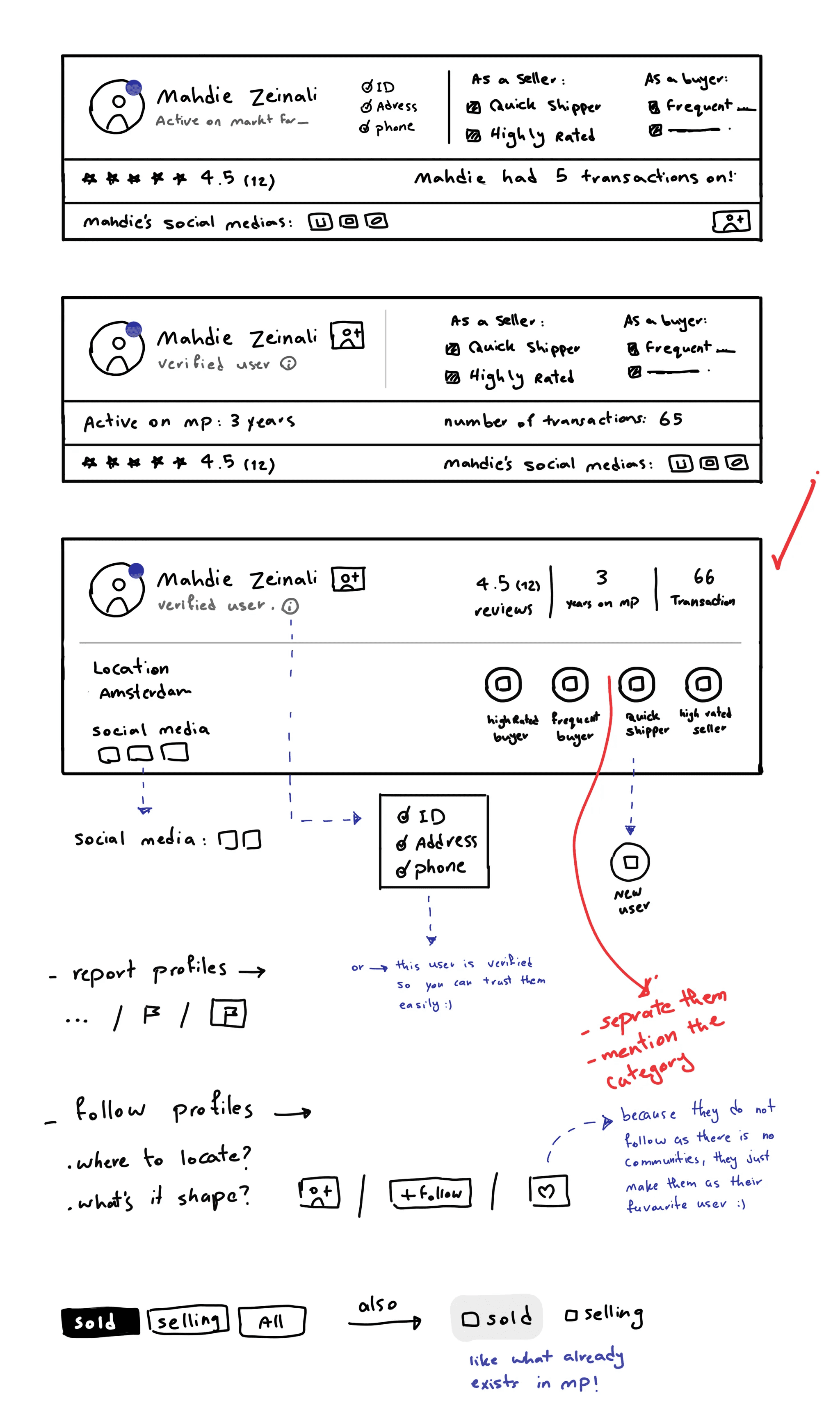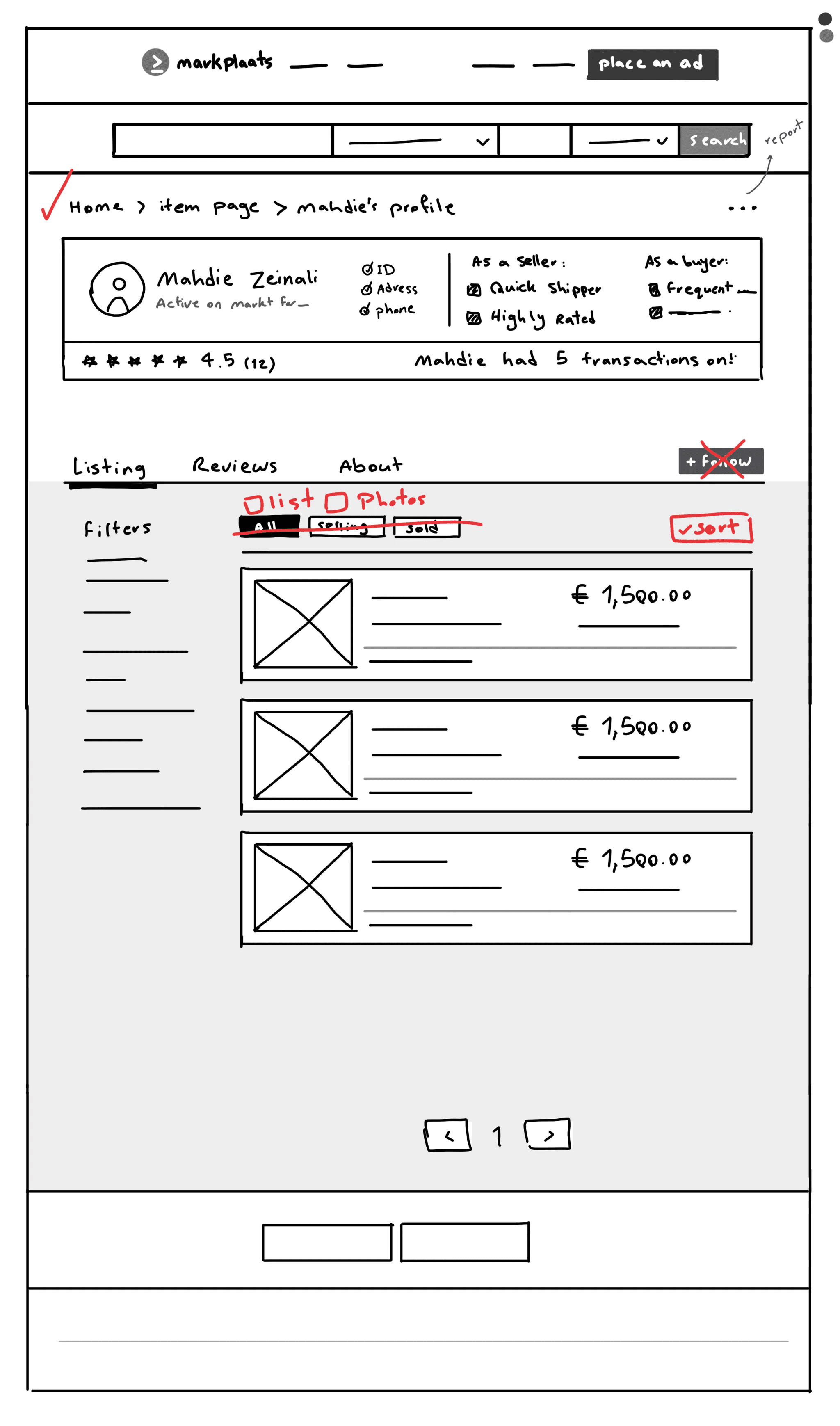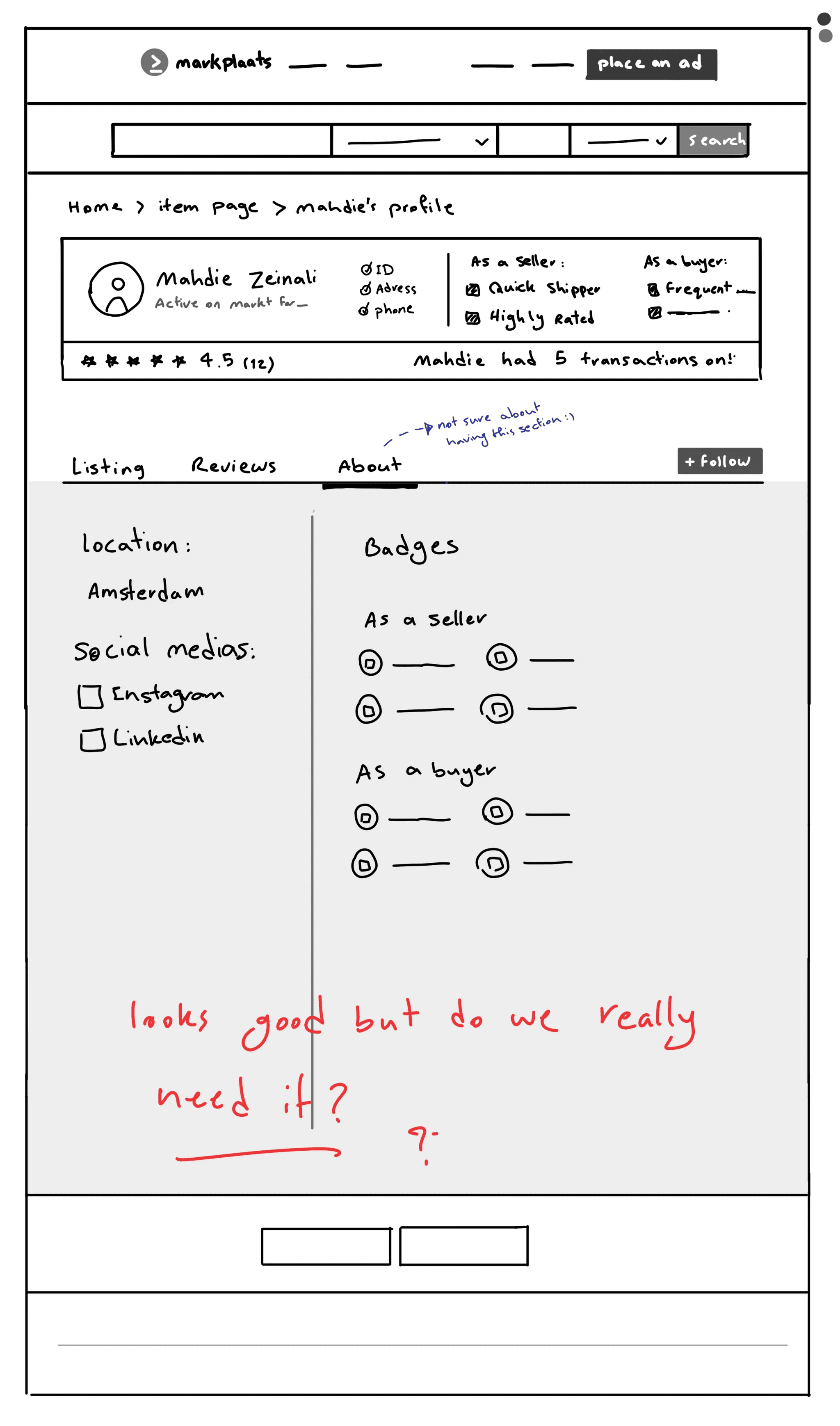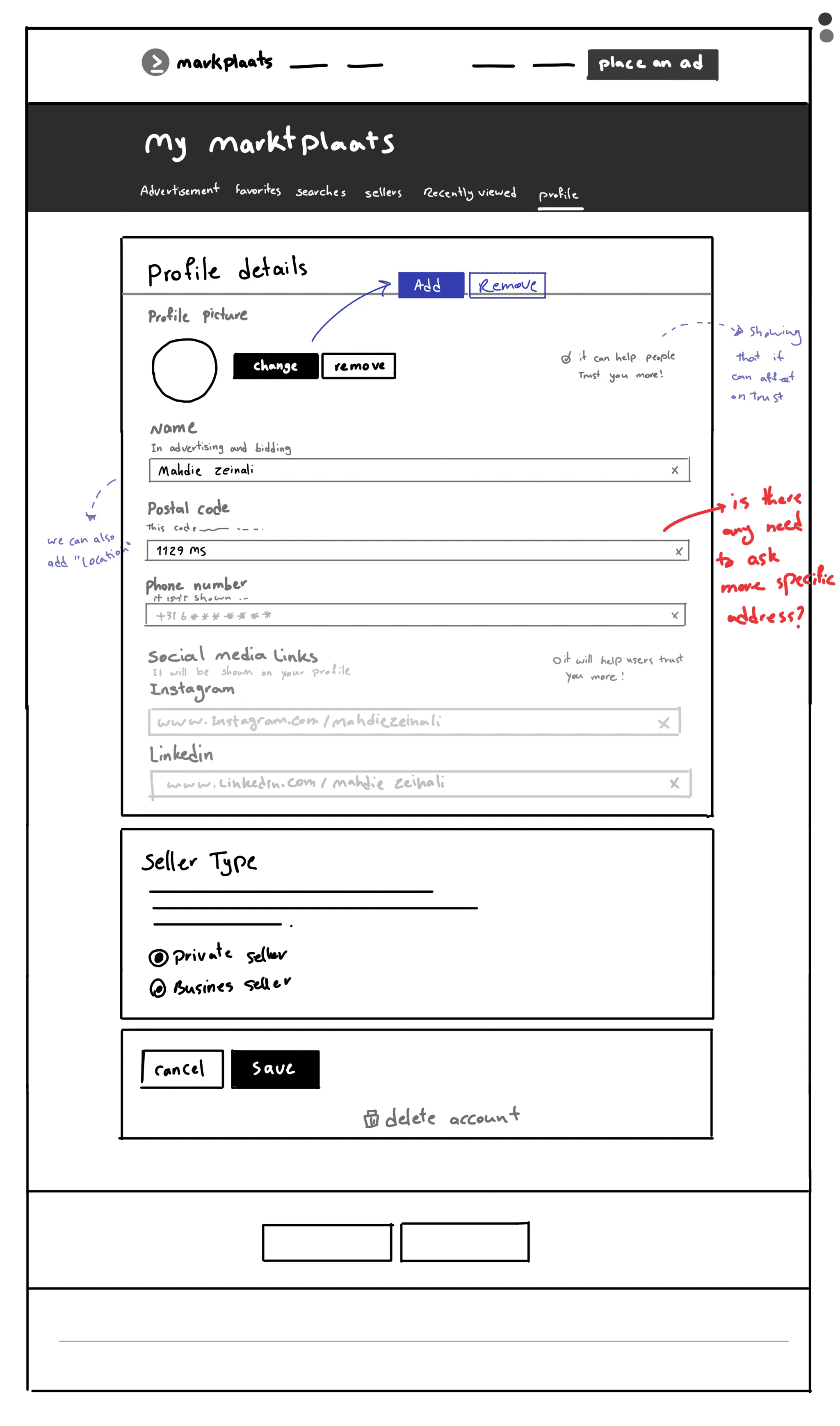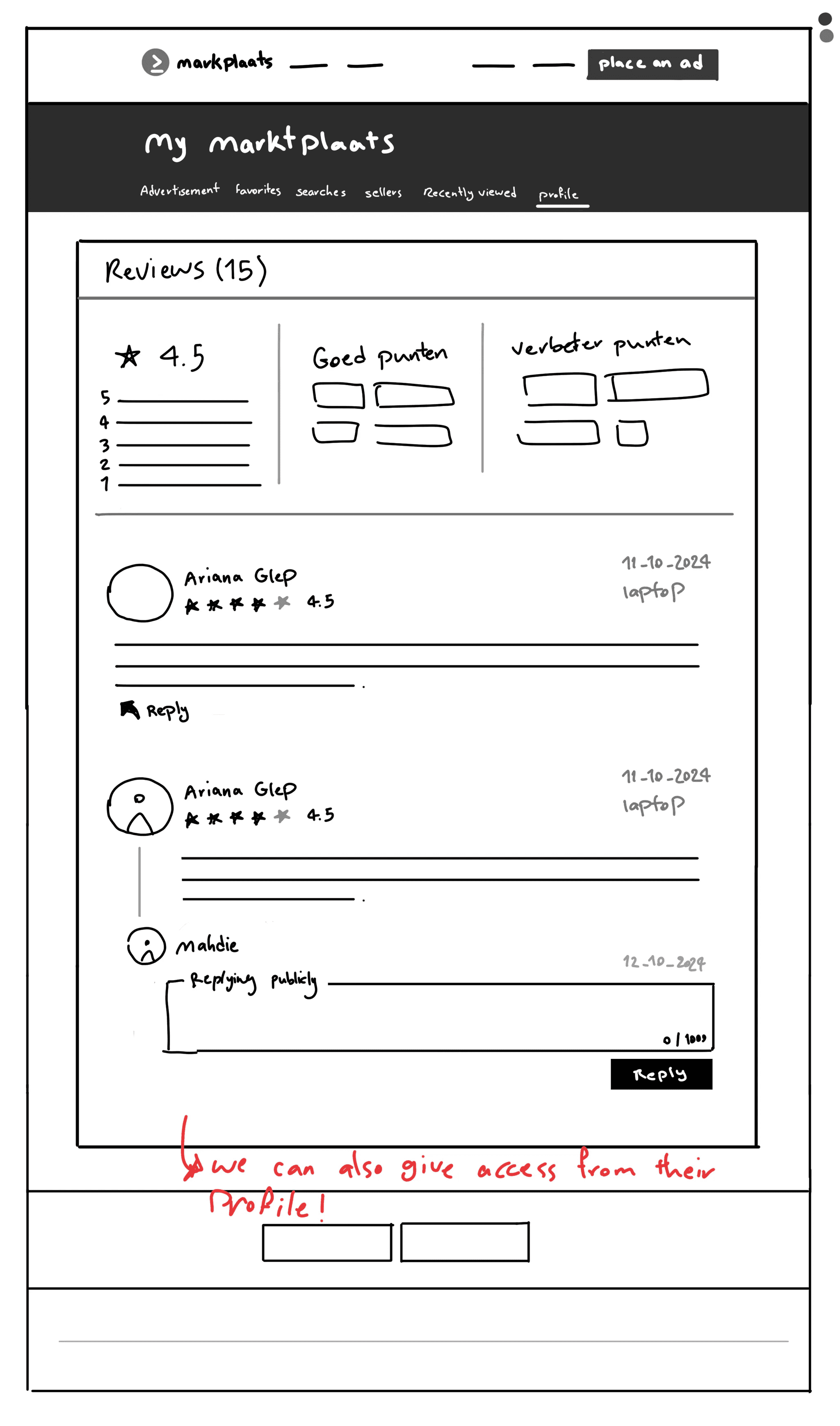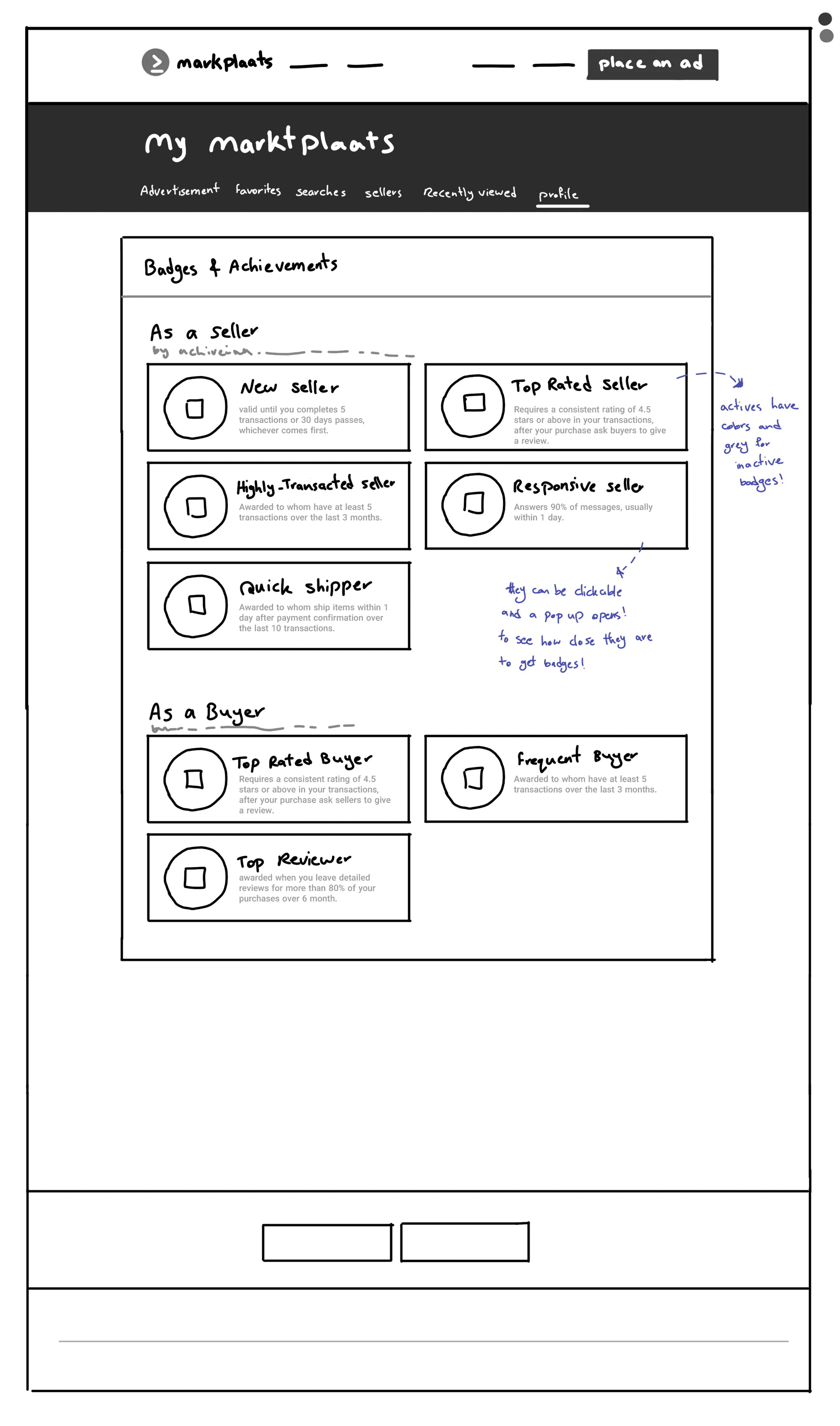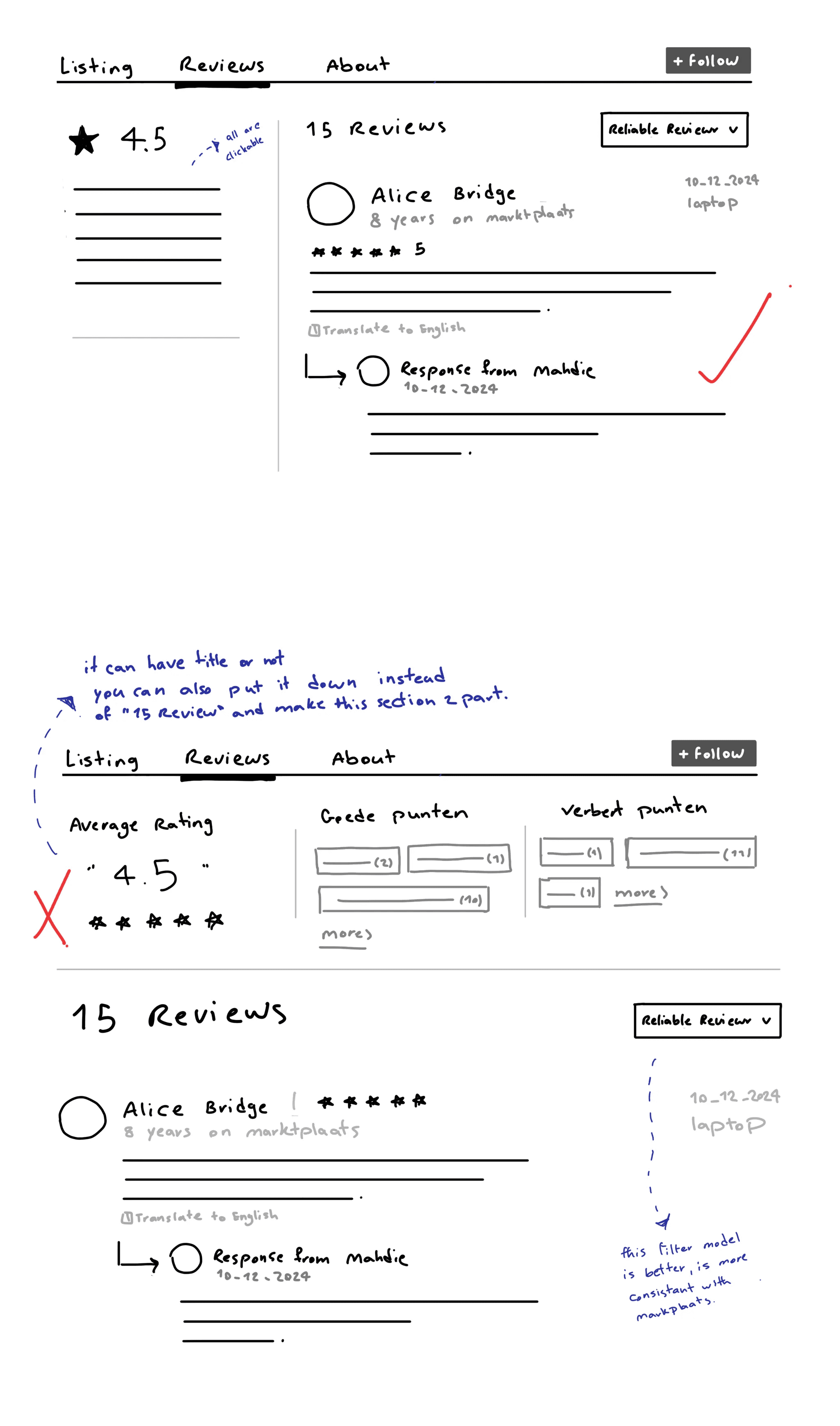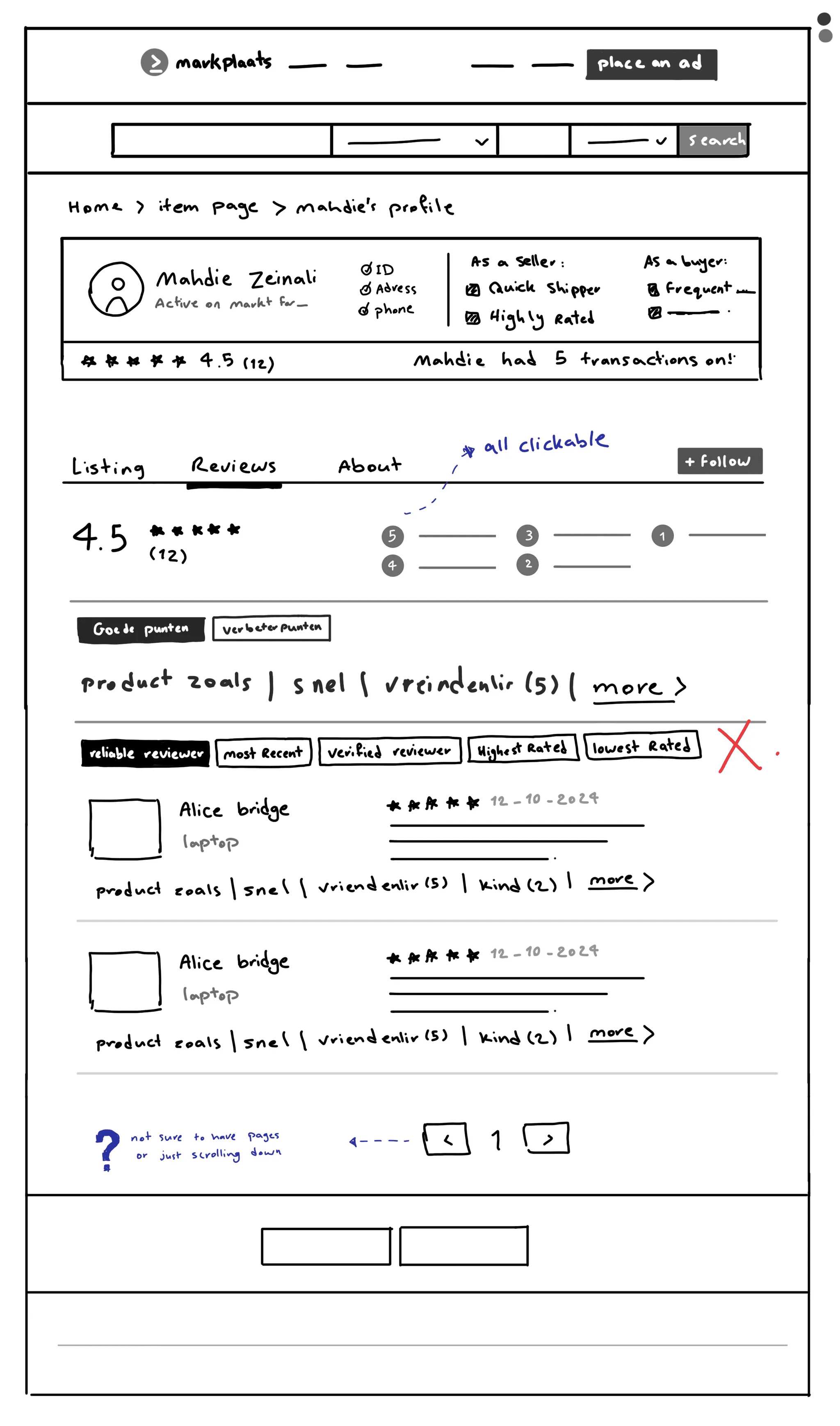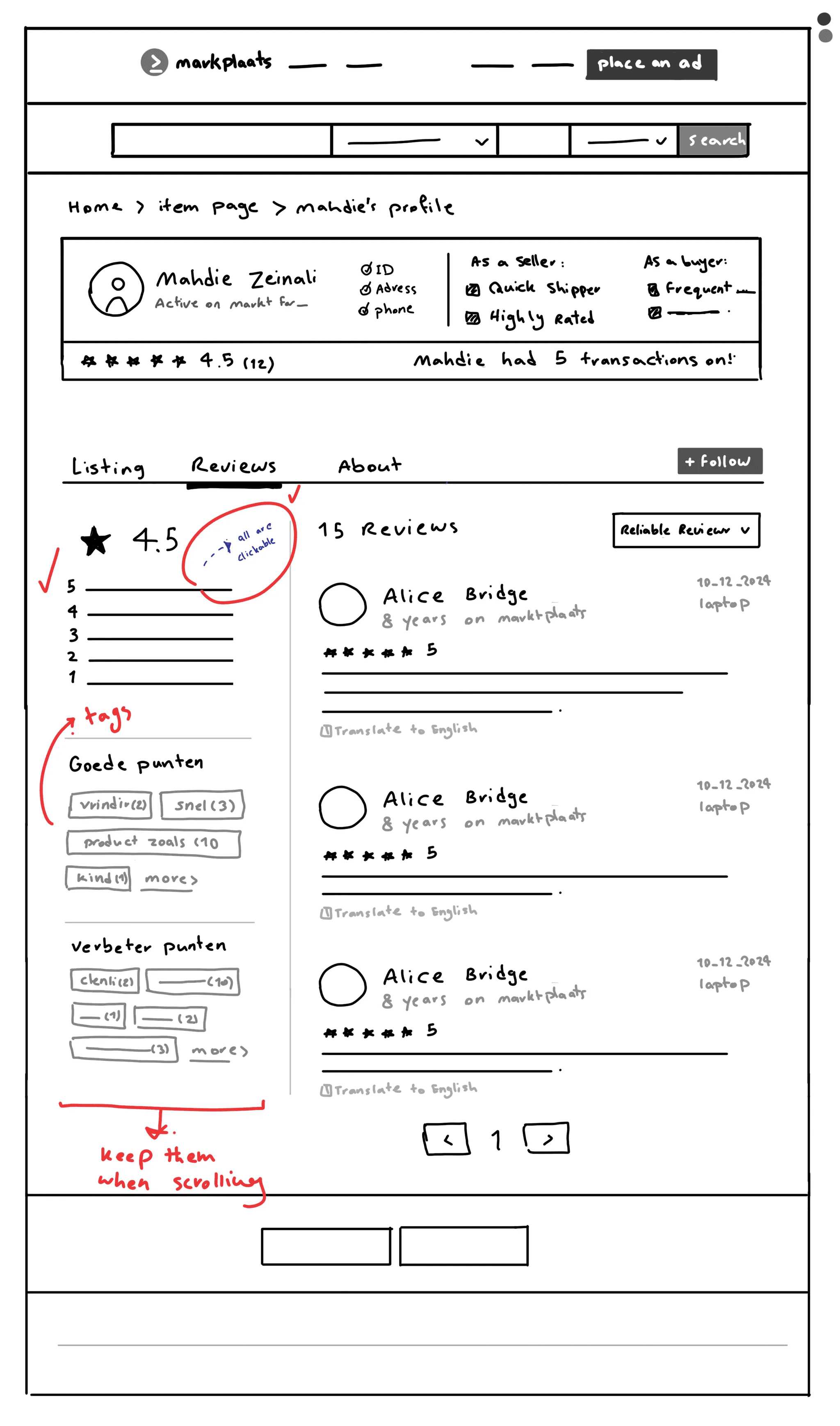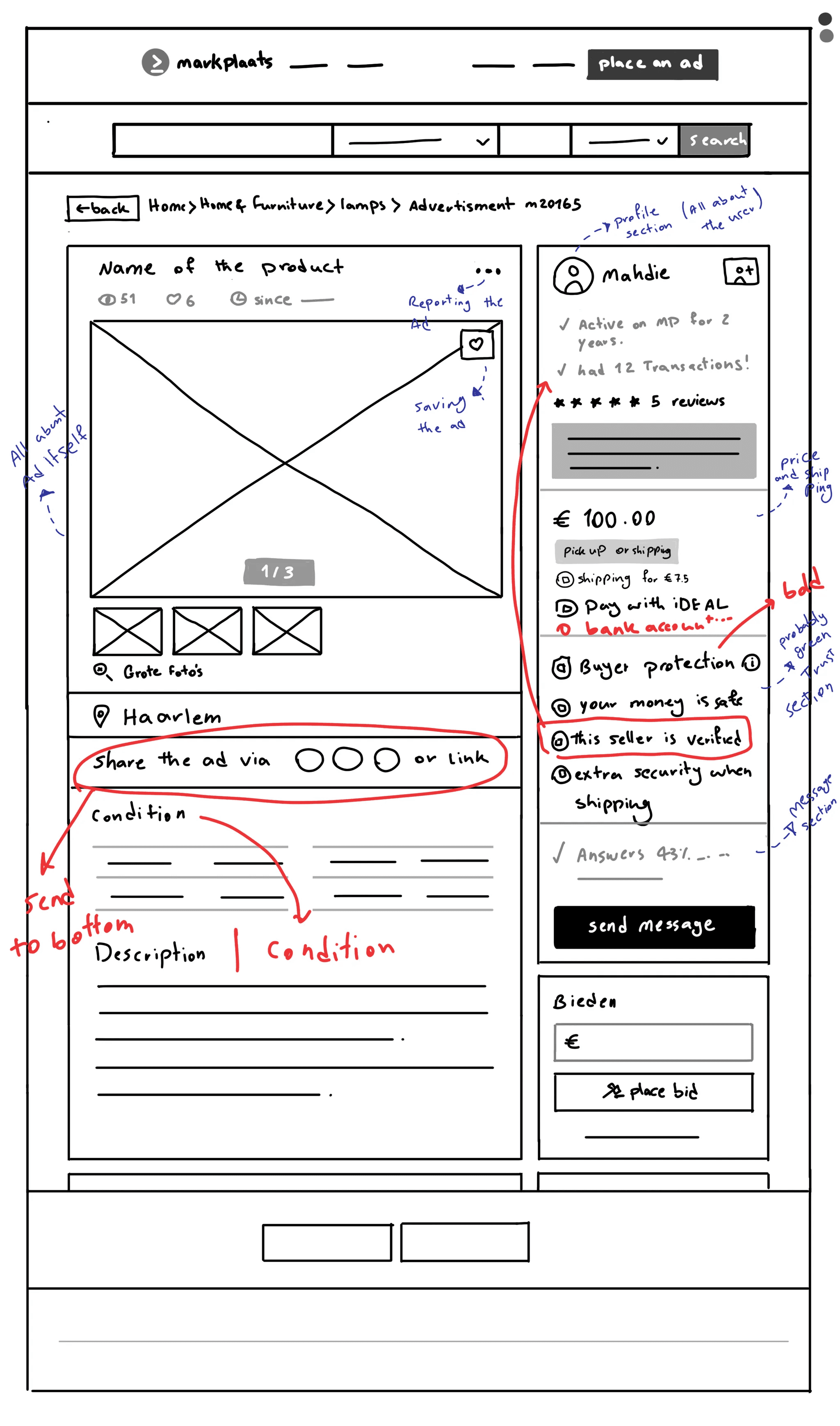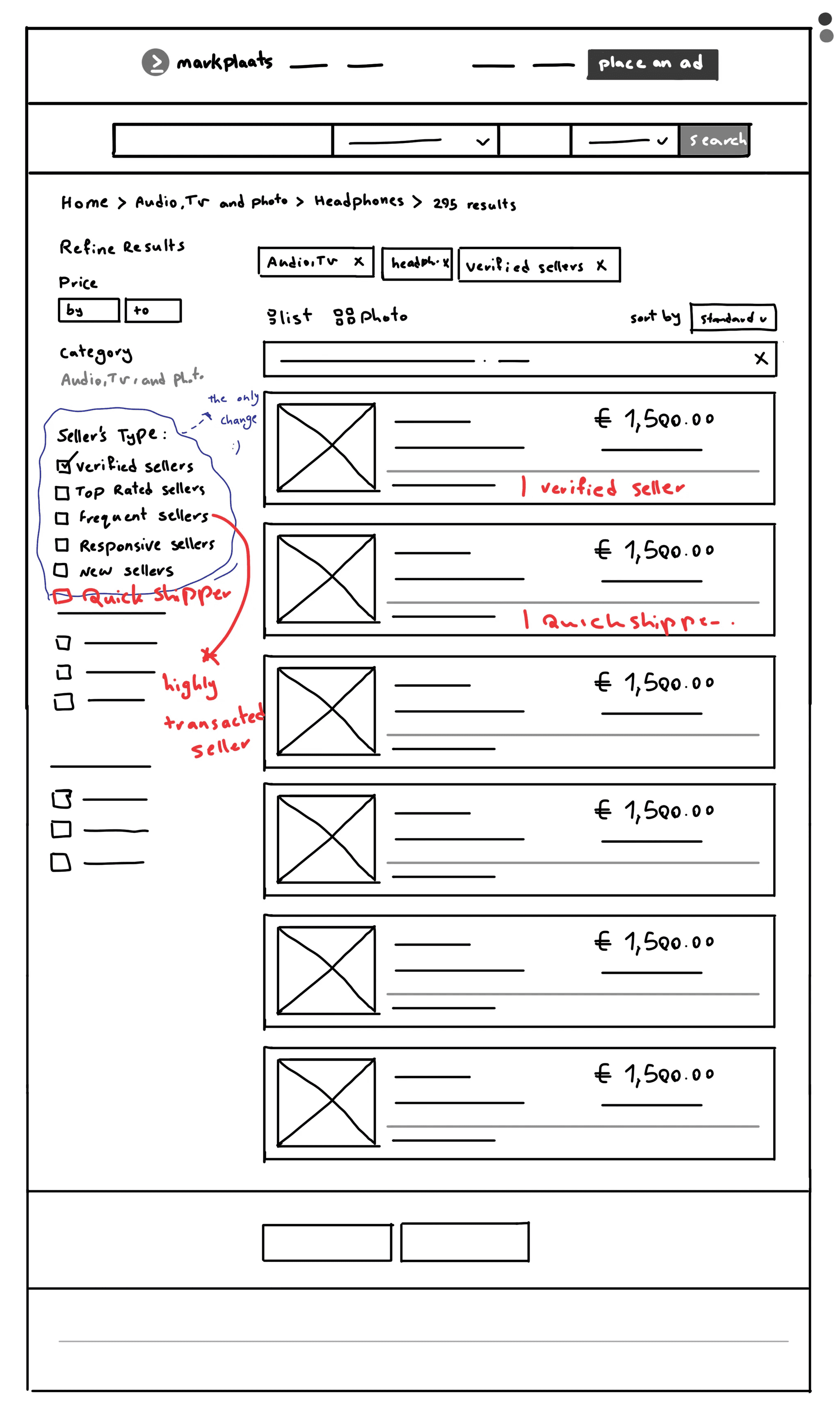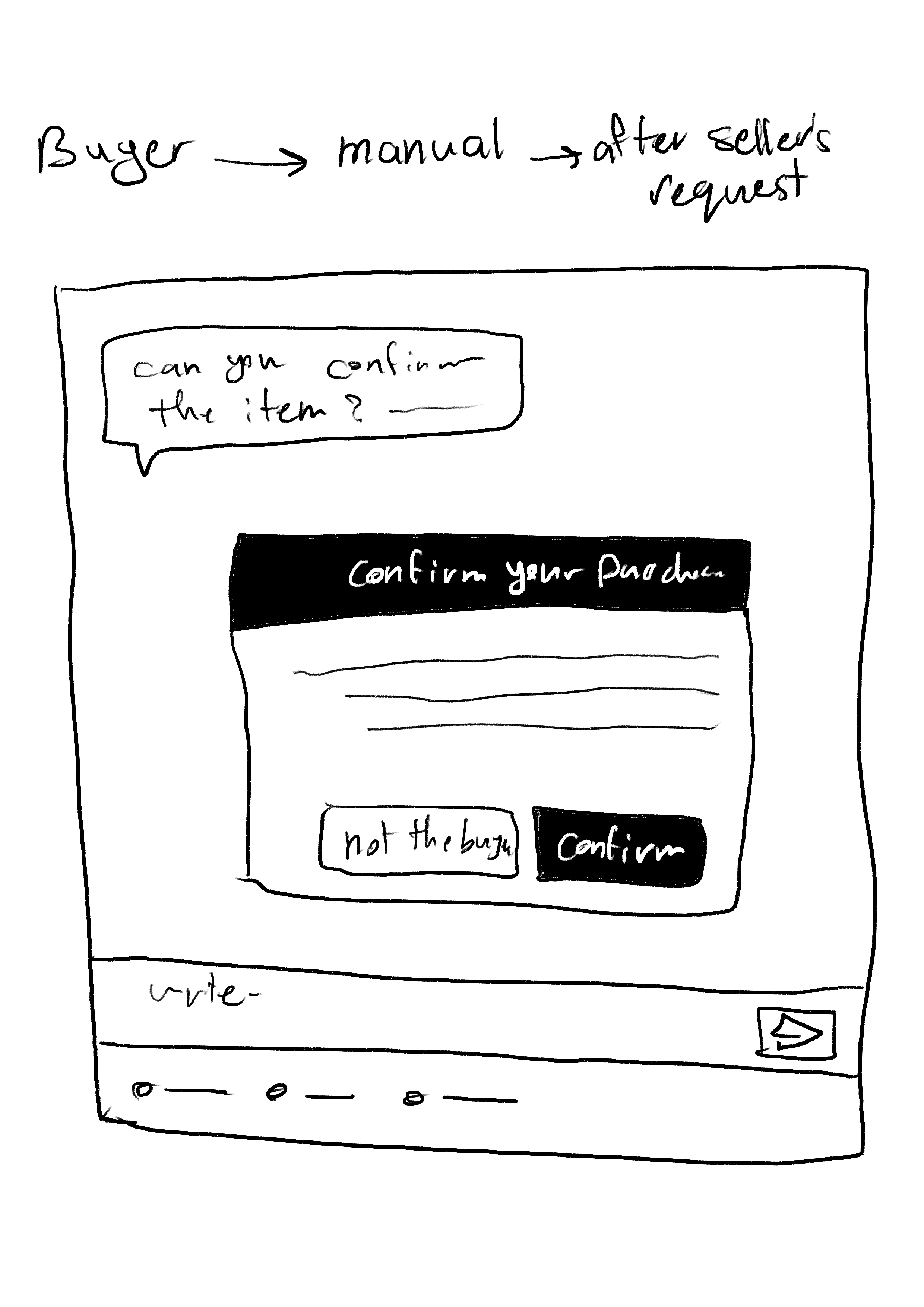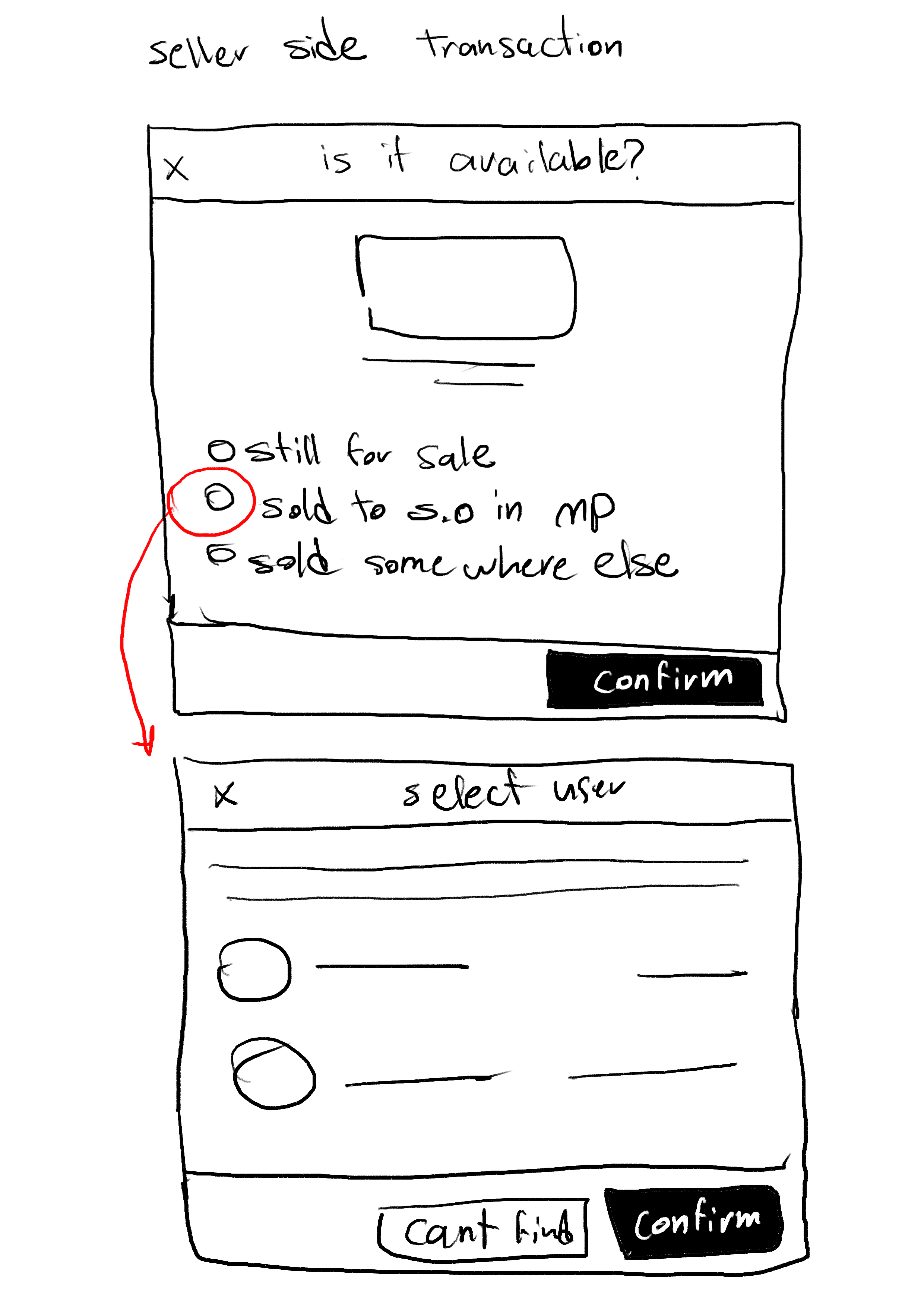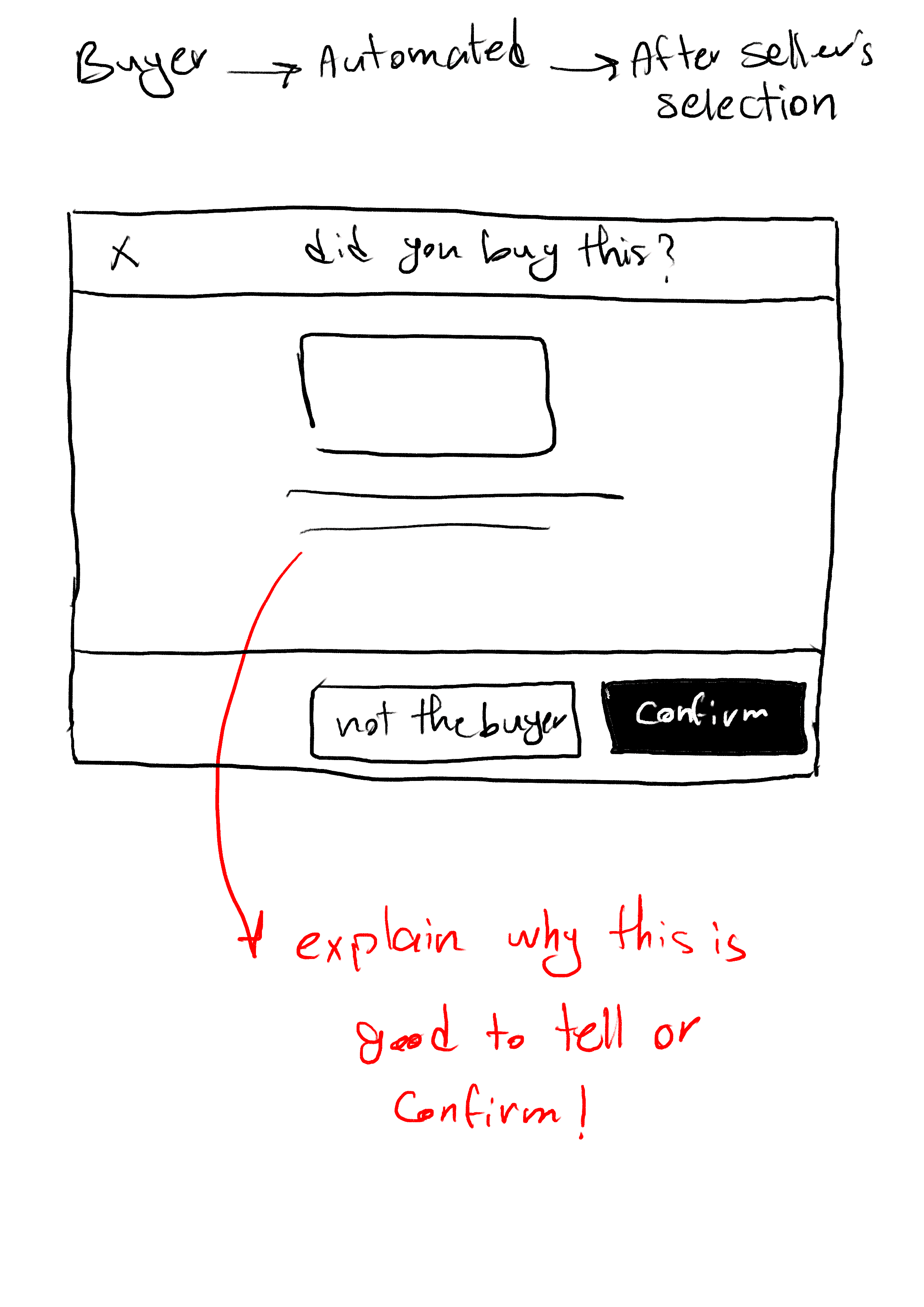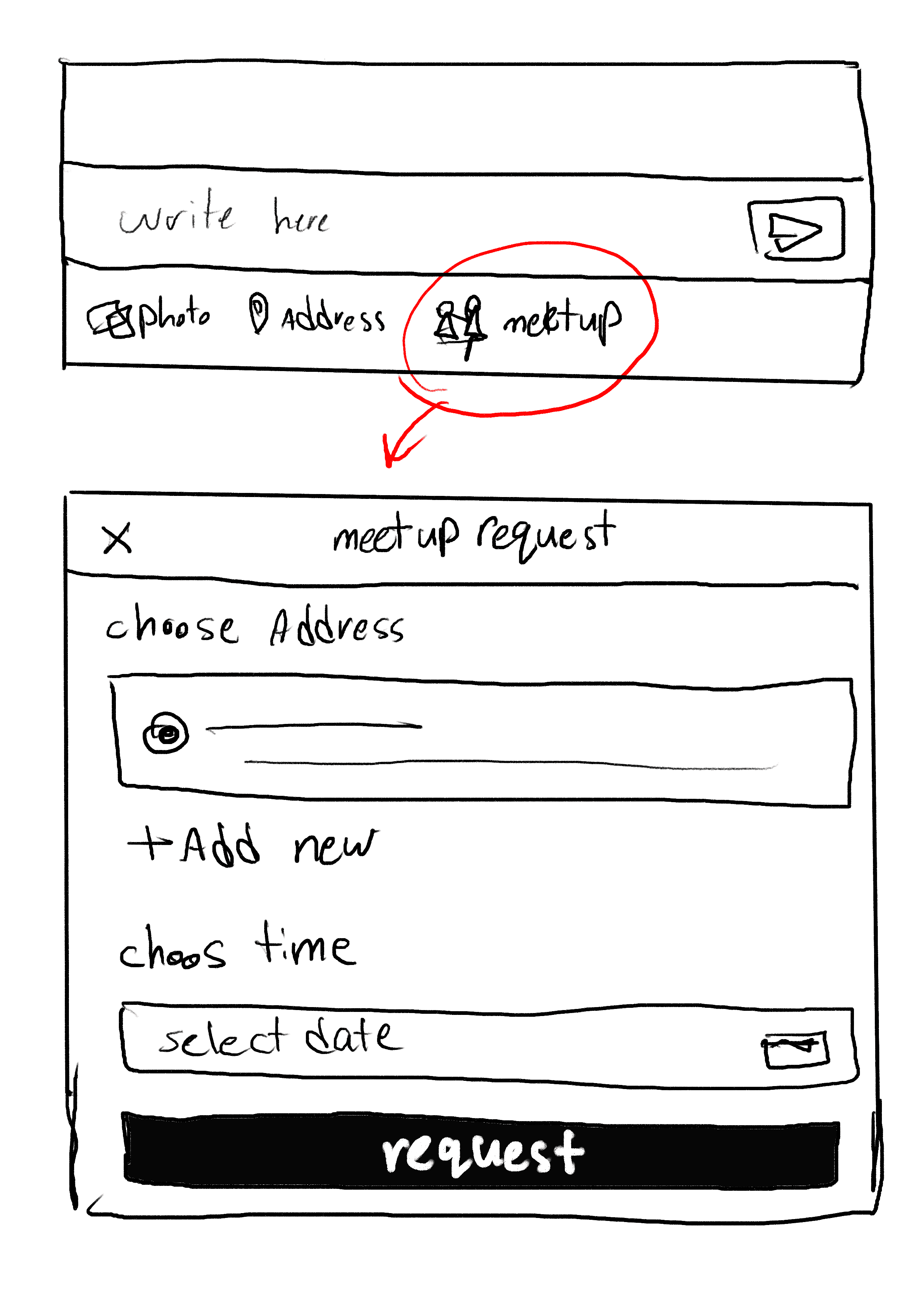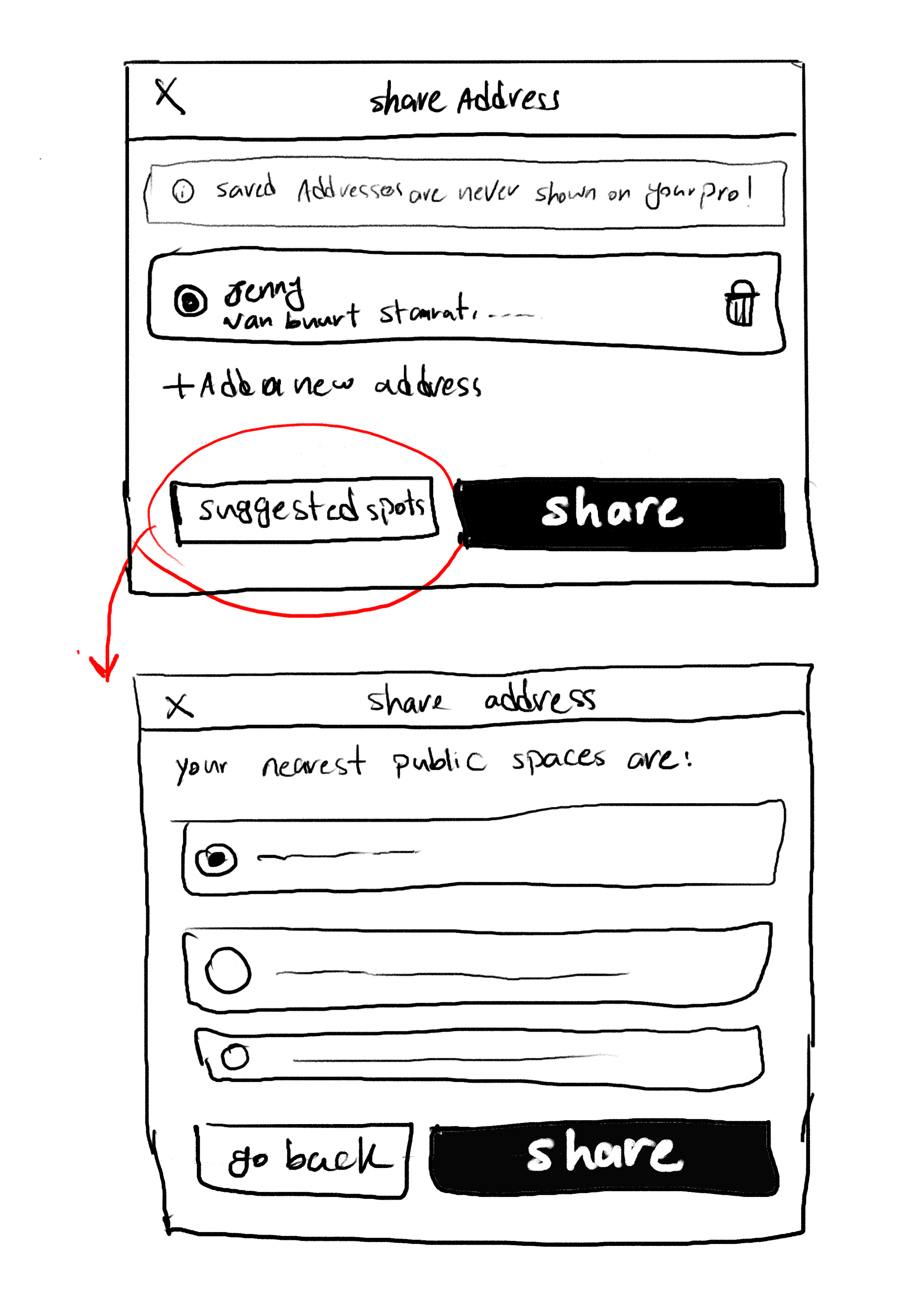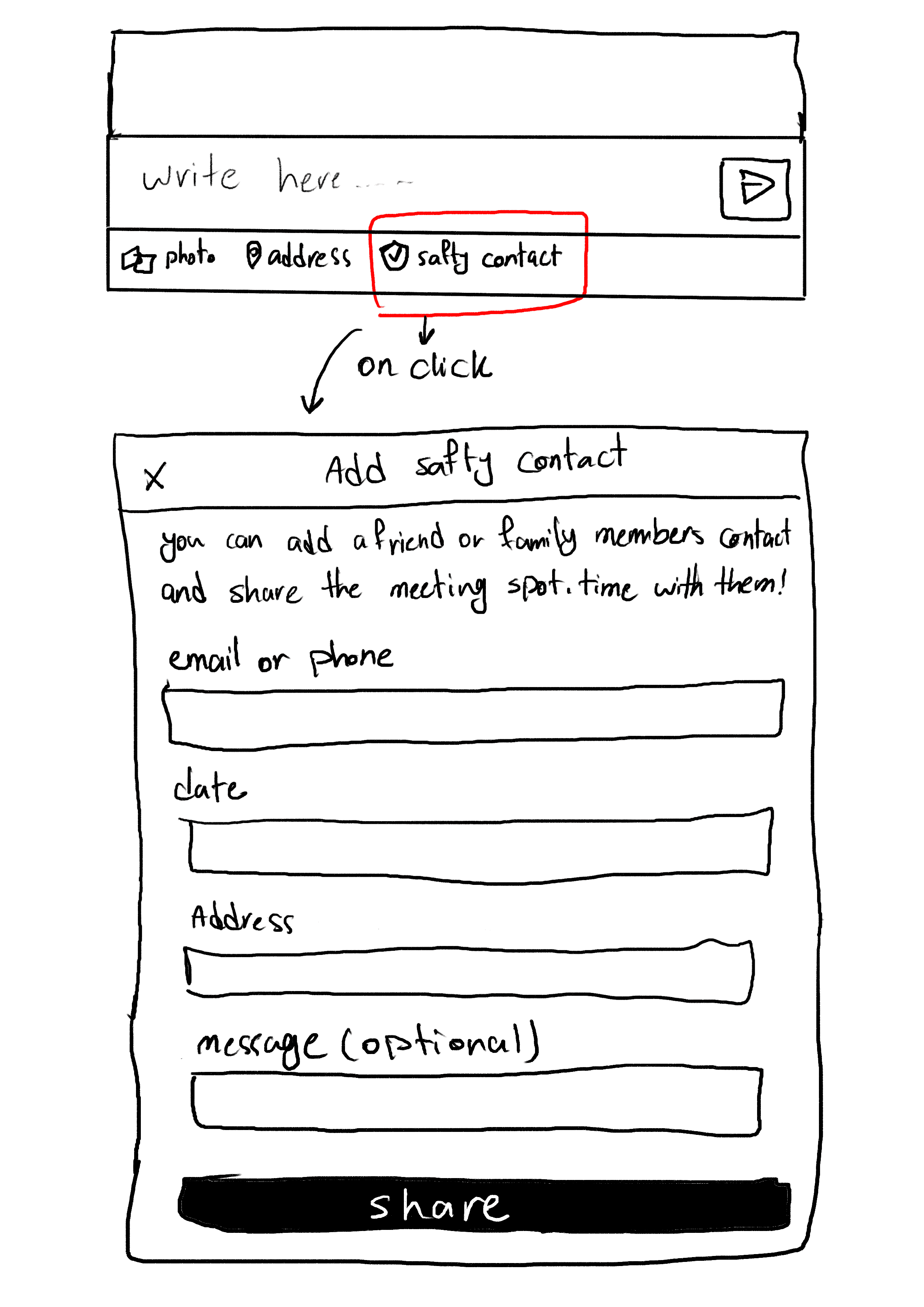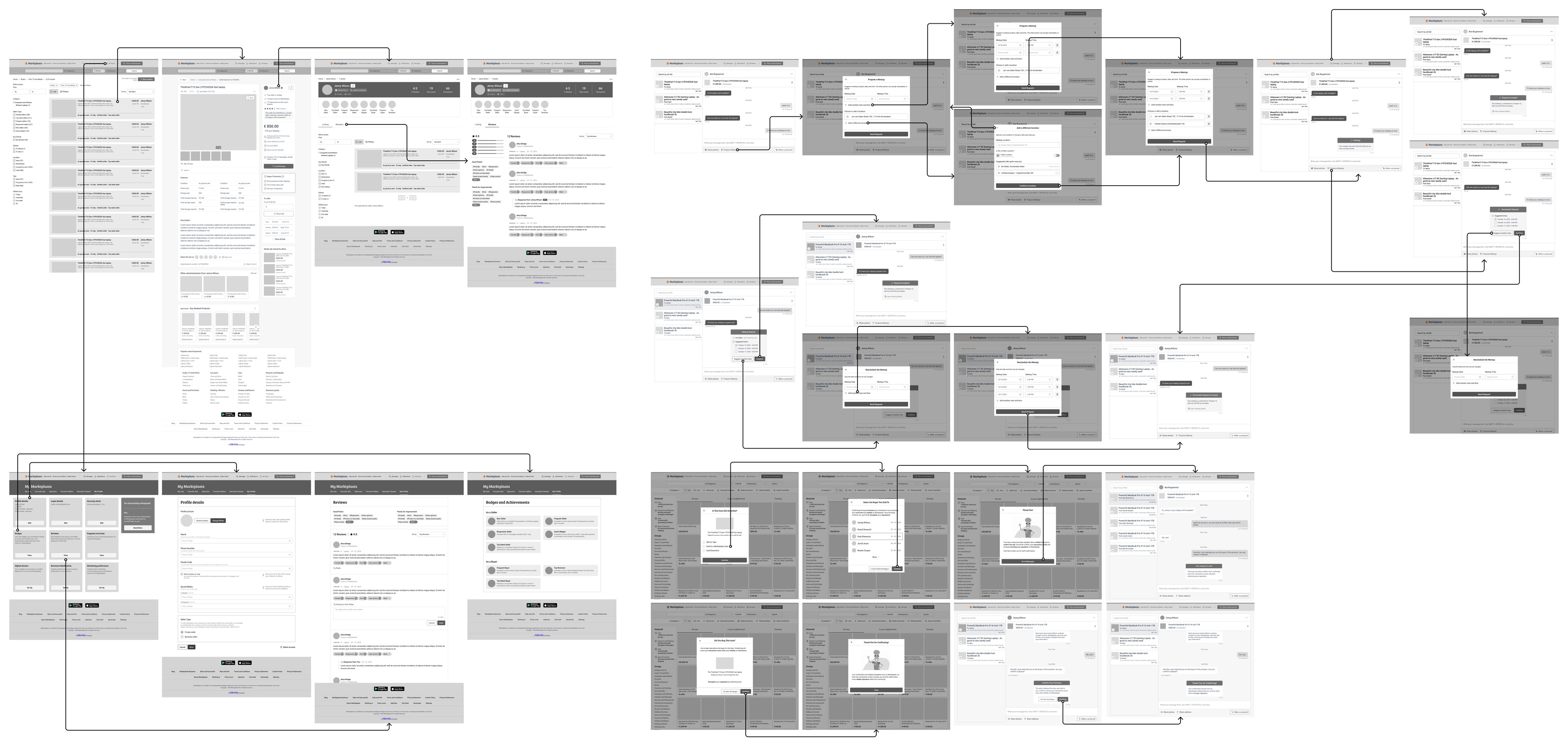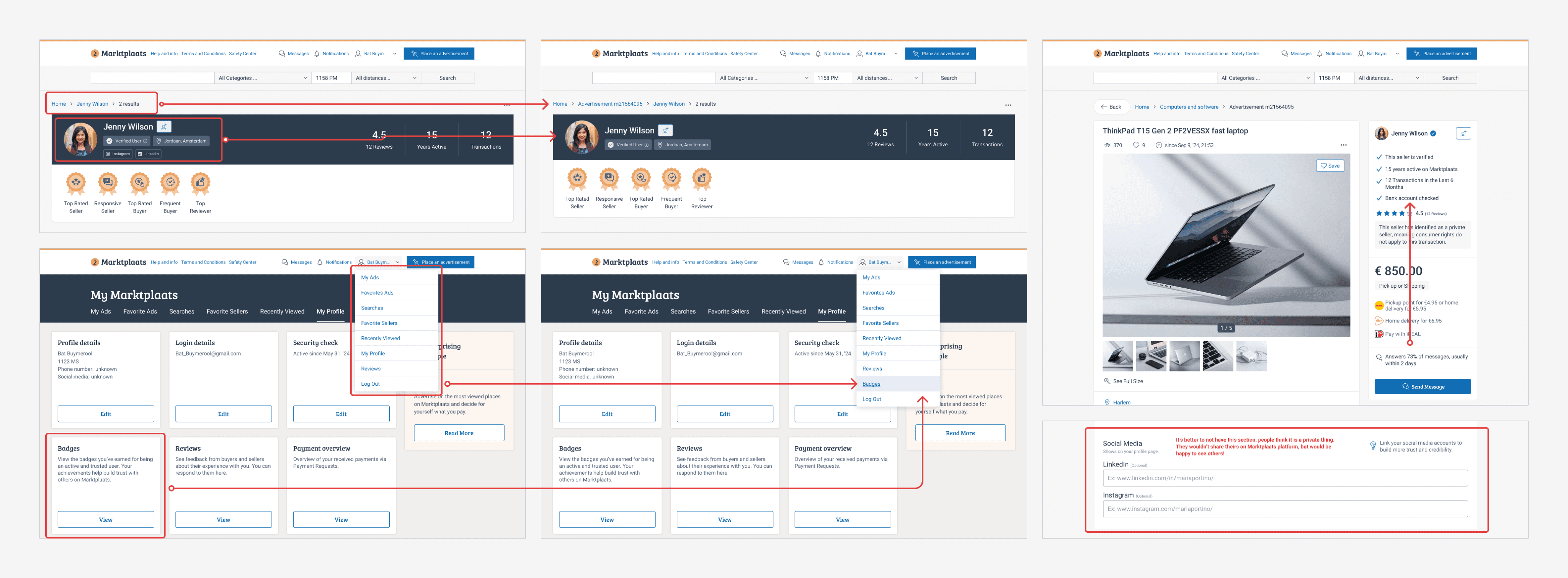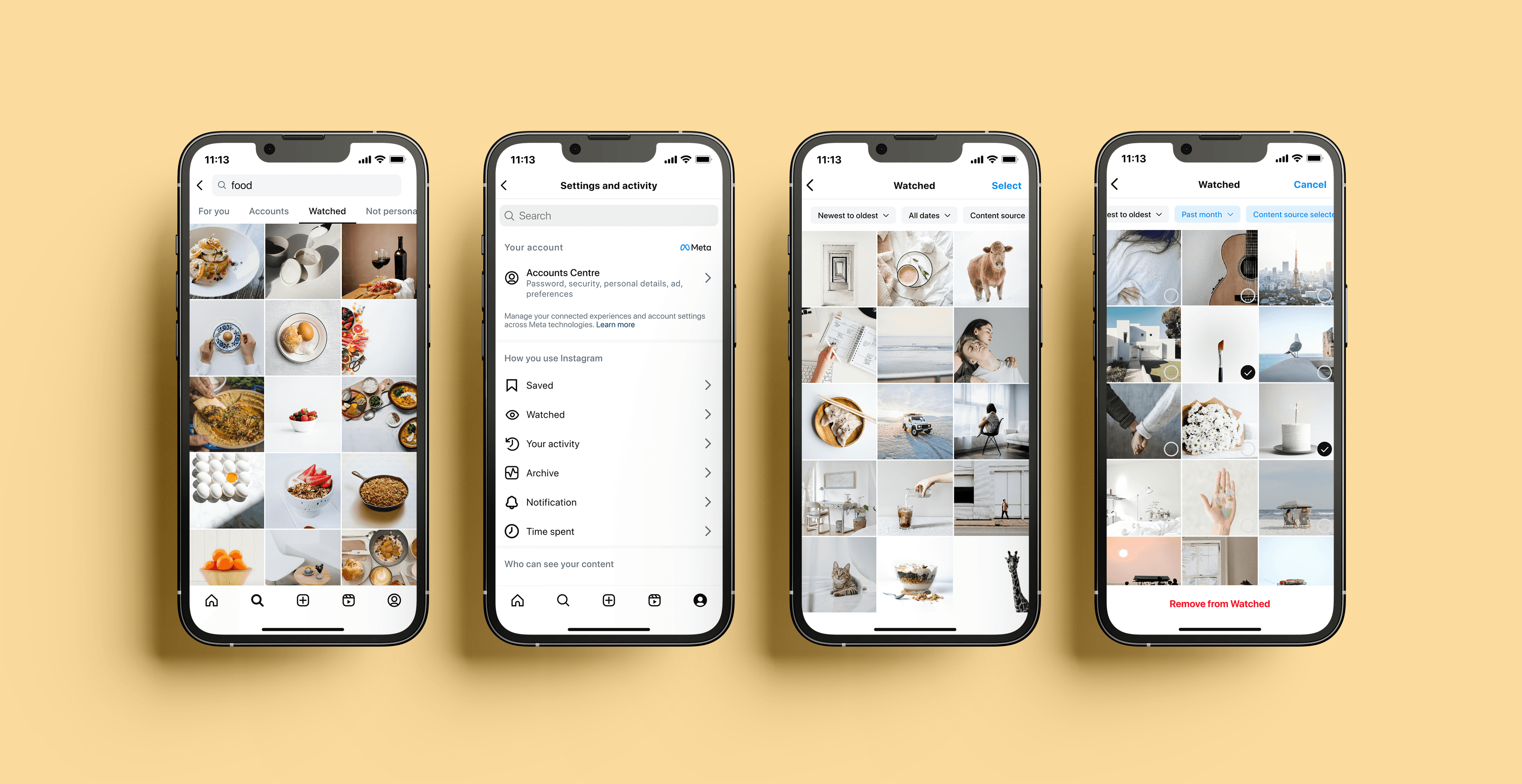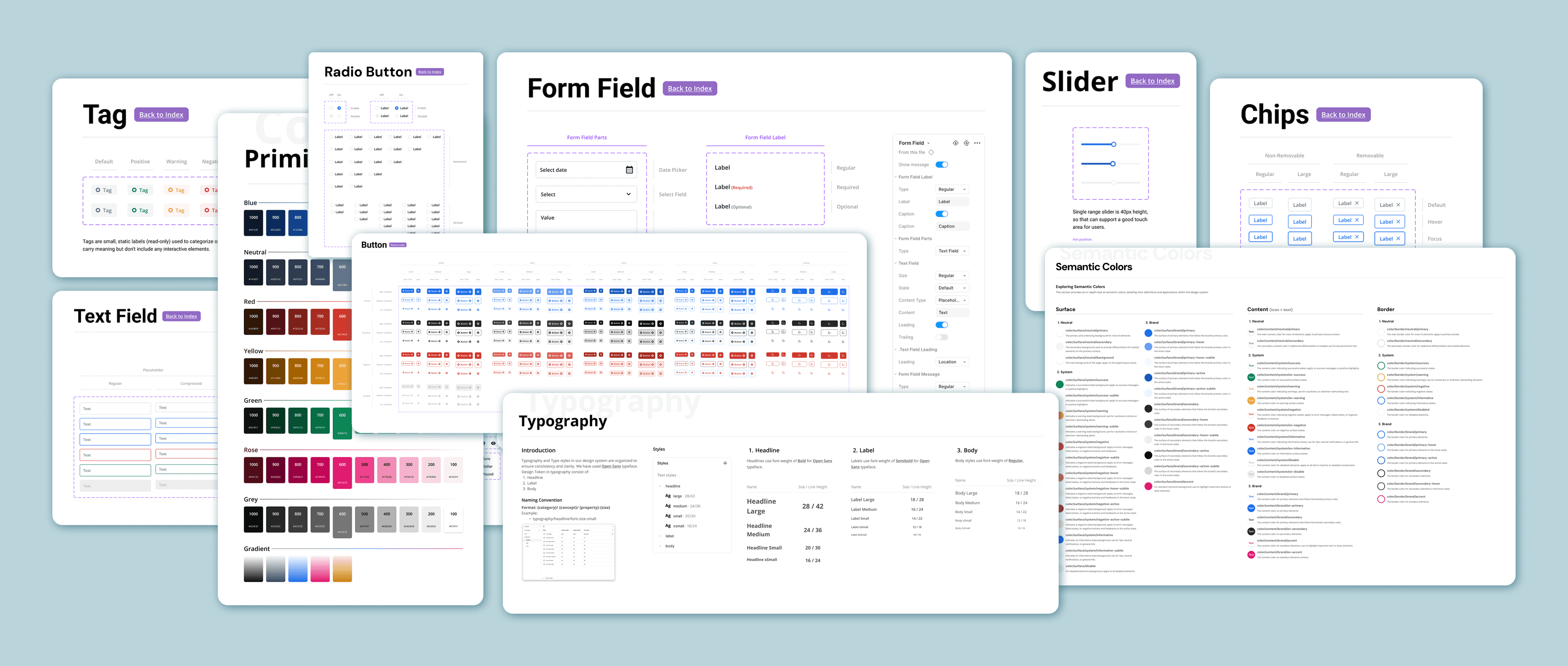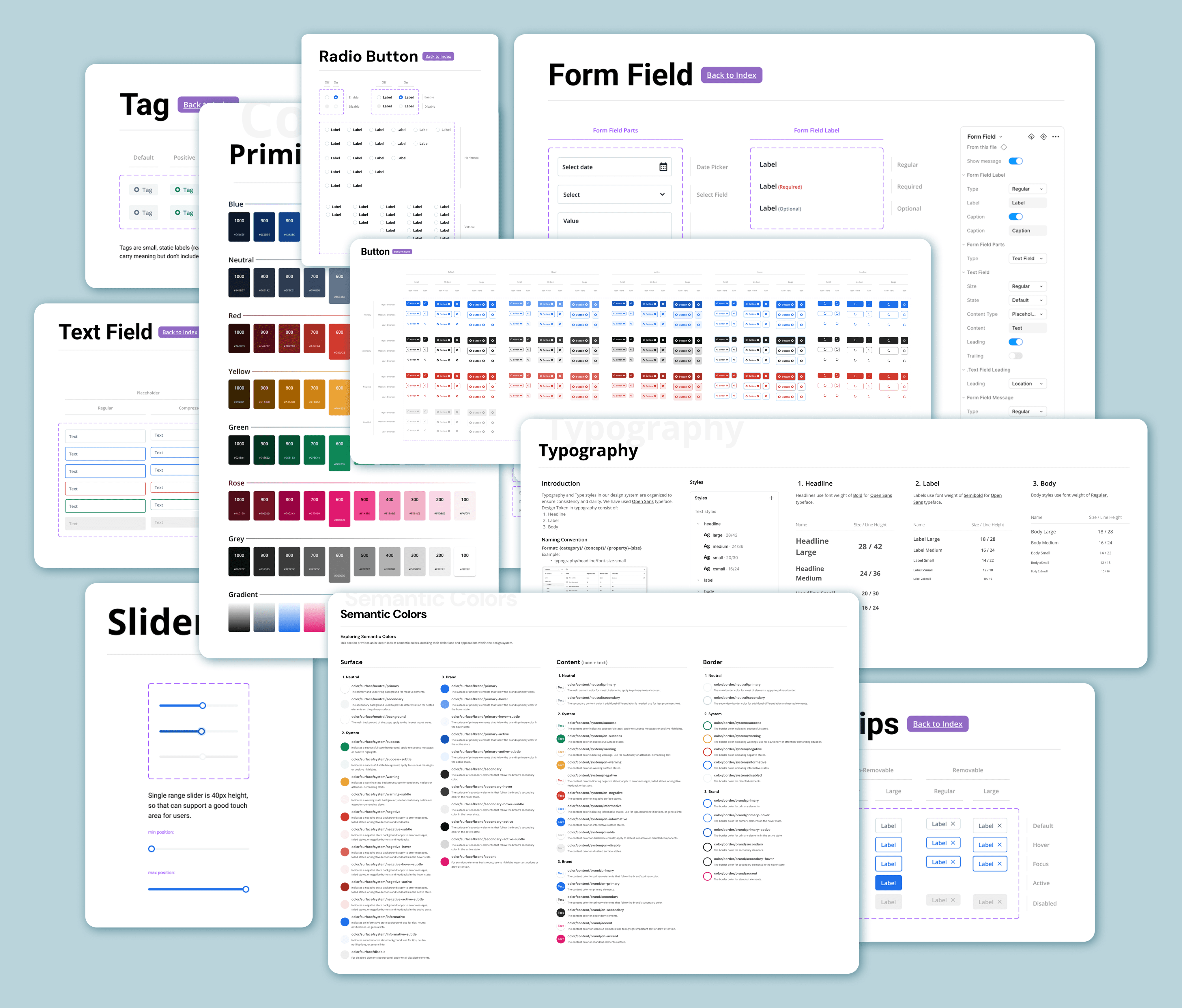Expats using Marktplaats struggle to assess trustworthiness due to cultural unfamiliarity and people's anonymity, leading to failed transactions, safety concerns, and hesitation. Improved trust signals and clearer interactions are critical for helping expats feel safe and confident on the platform.
The objective is to improve trust and transparency in peer-to-peer transactions on Marktplaats, particularly for expats, by enhancing user interaction and credibility evaluation. The expected outcomes include higher user retention, increased private transactions, fewer fraud incidents, and better satisfaction when assessing user credibility.
As an expat in the Netherlands, my first experiences on Marktplaats felt uneasy—not because it seemed unsafe, but because I had no real sense of who I was dealing with. Cultural differences and vague user information fed my mistrust. Recognizing how critical trust is for secondhand transactions, I explored how Marktplaats could better address these concerns.
I analyzed last year’s user feedback on Trustpilot, Reddit, Google Play, and the App Store, surfacing common complaints around:
I interviewed 10 expats (until saturation) to understand their struggles with trust, credibility, and safety when using Marktplaats — all of them used the website and were unaware of the app, so we focused on the web experience.
Buyers:
Sellers:
Buyers:
Sellers:
I analyzed how platforms like Facebook, Vinted, Poshmark, Depop, Mercari, and Ebay to understand how they tackle the challenge of building trust between users.
To measure the impact of the proposed UX improvements on Marktplaats, the following key metrics have been identified:
By creating a user journey map, I was able to visualize their experience and identify pain points, and opportunities.
I prioritized opportunities across the user journey by categorizing them and applying the ICE scoring method, with input from a software engineer and AI support.
I sketched solutions based on top-ranked ICE opportunities, focusing on high-impact and confidence ideas with low effort.
Profile Transparency
Badges and Profile
Visual Trust Signals
I integrated the new flows and pages into Marktplaat’s existing flow and visualized it through wireframes.
These screens highlight improvements that enhance trust signals in existing pages. New features and the full interactive experience are presented in the "Solutions section".
Solutions
Let buyers quickly gauge seller credibility through filters which allow them to focus on specific seller types (e.g., verified, top-rated, frequent). Listing layouts are reorganized to dedicate space for buyer protection info and seller details, making trust factors more noticeable and accessible.
Sellers
Sellers can propose a meetup with one location—either a suggested safe spot or a custom address—and multiple date/time options. This reduces coordination and builds trust by offering clear, safe meeting plans.
Buyers
Buyers can confirm or reschedule the proposed time and date. The clear flow make the meetup feel more reliable. Once confirmed, both users can share the plan with friends for added peace of mind.
Sellers
Sellers can report a sale and select the buyer if it happened on Marktplaats. Once the buyer confirms, the transaction counts for both profiles. This is especially useful for in-person or external deals, helping build long-term trust through a more accurate transaction history.
Buyers
Buyers can confirm whether they were part of a reported transaction. Once confirmed, both the buyer and seller see an increase in their transaction count, making their profiles more credible for future exchanges.
To evaluate the design, I ran usability tests with the 10 participants I interviewed earlier. The sessions used task-based scenarios to assess how users interacted with the new features and whether they felt more trust in the other party and more confident arranging in-person meetups.
✅ What Worked Well
Verified signals felt trustworthy.
Badges increased confidence.
Buyer protection stood out clearly.
Full reviews built user trust.
Meetup proposer was easy to use.
⚠️ Areas for Improvement
Badge page was hard to find.
Bank check wasn’t visible enough.
Social links felt unnecessary.
Returning from profile to listing was confusing.
User feedback indicates higher satisfaction and increased trust in both online and in-person transactions. These improvements suggest strong potential for positive shifts across all defined metrics — including retention, satisfaction, transactions, and fraud reduction.
I felt more confident messaging the seller after seeing their verified badge, years on the platform, and photo. Also, the reviews were more helpful now, I can read detailed feedback and see how the seller responded. It gives me a clearer picture of who I’m dealing with.
Suggesting safe meetup spots was a smart touch. I usually overthink where to meet, so seeing recommended places near my area helped. Also, being able to pick a few time options felt more respectful to both sides. It just felt safer and more organized.
Seeing confirmed transactions on someone’s profile makes me trust them more, it shows they’ve actually completed deals. For the confirmation process, I’d rather get a pop-up to confirm the deal instead of having to send or receive a message myself.
It was way easier to spot who I’d actually want to buy from. I used the filters to skip random or inactive sellers. And now I can finally see the buyer protection info — in the old design, it was barely noticeable.
While the introduction of additional trust indicators builds confidence and facilitates safer transactions in the short term, it's crucial to consider potential long-term behavioral shifts and platform-wide trade-offs.
New Seller Activation
Emphasis on trust badges and visible transaction history may discourage new or casual sellers from participating.
Perceived Complexity
An increase in visible trust indicators and filters might overwhelm new users, leading to higher initial drop-off.
Trust isn’t built through one feature, it’s the result of multiple signals working together. In this project, I learned to design a trust system where profile transparency, reviews, transaction confirmations, and safe meetups reinforce each other. Each part had to be credible alone yet elevate the whole, crucial for building lasting trust in peer-to-peer selling.
This project began as a collaboration with a close friend who was job hunting and extremely busy. As deadlines slipped, I felt stuck, I didn’t want to pressure her. After researching, I discovered Nonviolent Communication, which helped me express my needs respectfully. We had an open conversation and decided to continue separately. The project progressed, and our friendship remained intact. I learned how to set boundaries thoughtfully.
